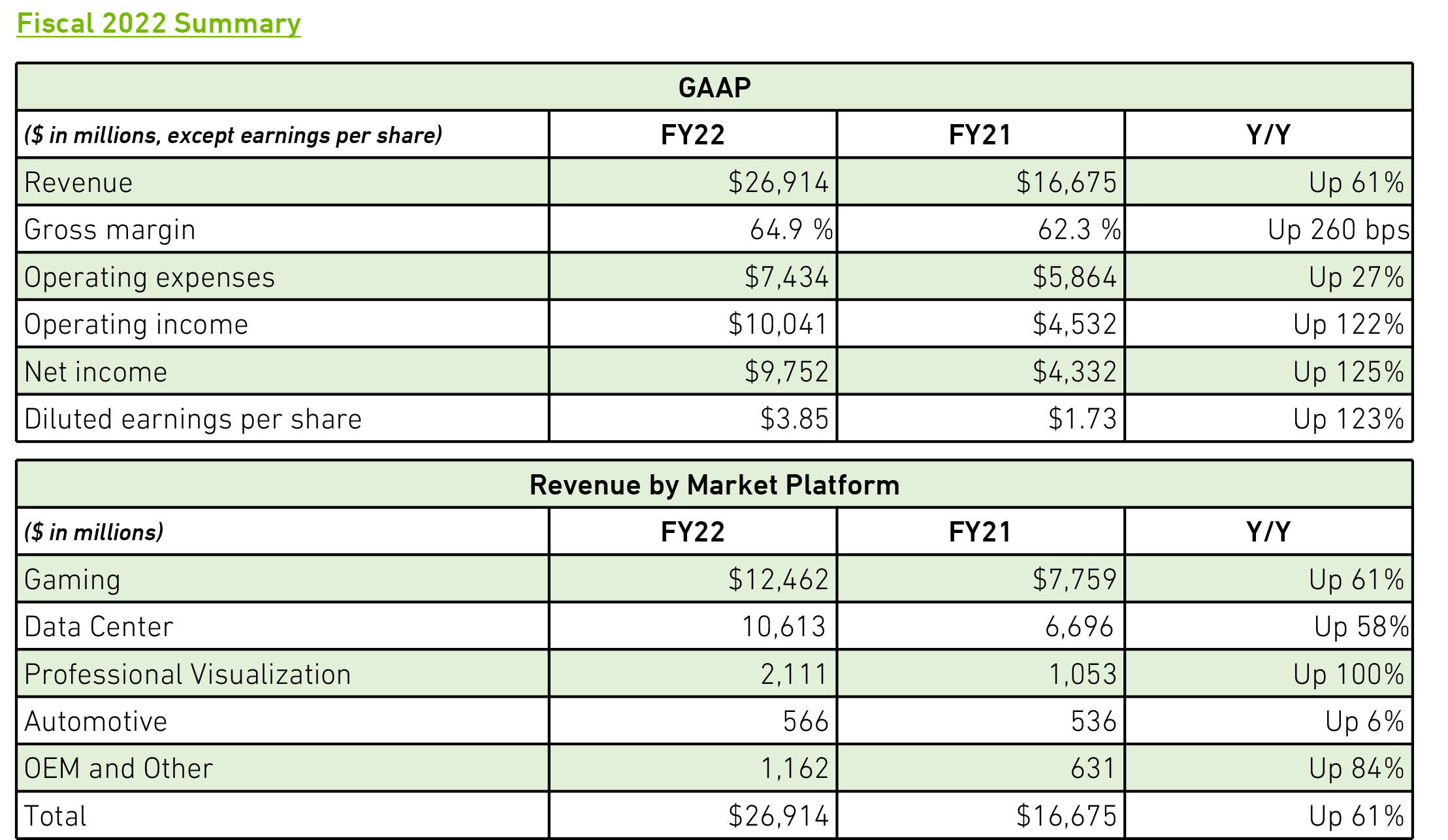Nvidia Says It Is Still Developing a Full Spectrum of Arm CPUs
No Arm acquisition? No worries.
Although Nvidia had to drop its plans to buy Arm, Nvidia CEO Jensen Huang revealed during the company's earnings call tonight that it still has big plans to create a full portfolio of Arm-based CPUs for a wide range of applications spanning from the data center to robotics.
The company says that its inaugural Grace CPU is on-track to be released in the first half of 2023, but its release marks just the beginning of Nvidia's long CPU journey. Huang says the company has a 20-year license for Arm's architecture, so it will use the instruction set to develop CPUs for a wide range of applications spanning from tiny SoCs for robotics to high-end processors for supercomputers.
Big CPU Plans With 20-Year Arm Architecture License
"We are on track to launch our Arm-based Grace CPU targeting giant AI and HPC workloads in the first half of next year," said Jensen Huang, chief executive of Nvidia, at the company's earnings call with financial analysts and investors. "Our 20-year architectural license for Arm's IP allows us the full breadth and flexibility of options across technologies and markets."
Nvidia has four major businesses: gaming and professional graphics (including the GeForce Now remote gaming service), AI/HPC, data center, and automotive. Nvidia says it can deliver optimized platforms for all of those segments with CPUs based on its own custom Arm general-purpose cores. As such, Nvidia plans to develop a whole range of Arm-based CPU offerings targeting different applications.
"You are going to see a lot of exciting CPUs coming from us, and Grace is just the first example. You're going to see a whole bunch of them beyond that," said Huang. "We love to see the expansion of CPU footprints, and we are just thrilled that Arm is now growing into robotics, autonomous vehicles, cloud computing, supercomputing. We intend to bring the full spectrum of Nvidia's accelerated computing platform to Nvidia Arm CPUs."
Custom Arm Cores for Custom CPUs
Nvidia's multi-year Arm architecture license allows the company to develop highly custom Arm-based cores for a variety of applications, something that Apple does for its A-series SoCs for smartphones and tablets as well as M-series processors for Mac computers. But while Apple doesn't seem to be interested in chips for data centers or supercomputers (at least we do not know anything about such plans), Nvidia wants a top-to-bottom family of Arm chips with its own cores.
Nvidia envisions that as more applications adopt artificial intelligence, its CPU efforts will bring in additional value as the company can offer vertically integrated platforms for numerous emerging applications, including autonomous applications, like robotics and vehicles.
"We have multiple Arm projects going in the company from connected form devices to robotics processors, such as the new Orin [SoC] that is going into autonomous vehicles, industrial automation, and so on," said Huang. "You could expect us to do a lot of CPU development around the Arm architecture. […] One of the things that developed nicely over the last couple of years is the success that Arm has seen in hyperscalers and data centers. It really motivated them to accelerate the development of higher-end CPUs."
Get Tom's Hardware's best news and in-depth reviews, straight to your inbox.
It certainly makes sense for Nvidia to design its own CPUs and datacenter-grade chips to maximize its revenue opportunities and gross margins. However, Nvidia will continue to support industry-standard x86 CPU platforms for obvious reasons, as accelerated computing platforms are Nvidia's bread and butter.
"Our strategy is accelerated computing; that is ultimately what we do for a living," stated the head of Nvidia. "We will deliver on our three-chip strategy across CPUs, GPUs, and DPUs. "Whether x86 or Arm, we will use the best CPU for the job. Together with partners in the computer industry, we will offer the world's best computing platform to tackle the most impactful challenges of our time."
Record Earnings
For now, x86 platforms developed by AMD and Intel allow the fabless Nvidia to earn massive revenue and report record profits. In fact, the fabless Nvidia's gross margins greatly exceed those of Intel, an integrated device manufacturer.

For fiscal 2022, Nvidia's earnings reached a record $26.914 billion, up 61% from $16.68 billion a year before. In addition, the company's net income for the year totaled $9.752 million, and gross margin hit an exceptional 64.9%. For the fourth quarter, its revenue was $7.643 billion, whereas its net income slightly exceeded $3 billion on a 65.4% gross margin.


Anton Shilov is a contributing writer at Tom’s Hardware. Over the past couple of decades, he has covered everything from CPUs and GPUs to supercomputers and from modern process technologies and latest fab tools to high-tech industry trends.
-
samopa Replyhotaru251 said:so soon all 3 will make gpu and cpu.
More competition is always great.
They all already had CPU and GPU.
Intel still hold biggest market share of GPU.
NVidia already had Tegra and something inside Nintendo Switch.
Do I need talk about AMD ? 🧀 -
watzupken There is no reason why they cannot develop ARM based chips since they are licensed to do so. Which is the reason why their acquisition raises a lot of doubts about their intention.Reply